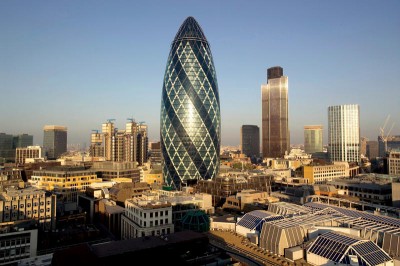Terrorism, Mental Health and the London Knife Attack

“And this is what disturbs me: the fact that people today, despite living with more safety and wealth and access to information than anyone in human history, feel as though the world is going crazy and something drastic must be changed.” — Mark Manson, Jul 28, 2016
How quick one judges. The warning about taking the draught of knowledge deeply, as opposed to a shallow sip, before assuming all is clear, should be borne in mind. A knife attack in London’s Russell Square by a nineteen-year old youth, leaving five injured and one fatality, becomes an instant magnet for terrorist assumptions and a rampant phenomenon. (True, it was terrifying for those attacked, but an act of terrorism?)
At work here is the surfeit of spectacle, and availability. Images, raw and unprocessed, race through the social media sphere, hurried on by clicks and “shares” with viral purpose. Twenty-four hour channels do the rest, adding spin and padding to what really happened. The packaging, on being released, gives the impression of being unprecedented. We never saw the like, and some such.
The response to the Russell Square attack played this out in full, showing good lashings of availability bias. Nothing, it seems, is allowed to escape that fateful utterance of “terrorist attack”. Moments of mental instability become instances of terrorist acumen. People are not permitted to be cranks; they must have also embraced a philosophical and political system. The suggestion is not merely demeaning to ordinary intelligence, but to the content of actual terrorism that Europe has witnessed for centuries.
What is different now, suggests Mark Manson, is not the events so much as the means they are conveyed, and the way such information is duly processed. “Cameras, the internet, and most importantly, social media. That is what’s new.”[1] All in all, the attention economy, dominated by a growing surplus of seekers and opportunists, becomes a case of gaining kudos for being in the appropriate place, where exposure is maximised.
This also demands an active complicity on the part of the consumer of the image, those wishing to over read their subject matter as exceptional when it is, in fact, dreary and uninspiringly prosaic. The banal, in a special way, becomes the remarkable.
To that end, Manson suggests that such “constant awareness of every fault and flaw of our humanity, combined with an inundation of doomsayers and narcissistic nihilists commanding our attention space, is what is causing this constant feeling of a chaotic and insecure world that actually doesn’t exist.”
The police have kept step with this. The modus operandi of the modern police statement is seemingly grouped around a few formulae: do not exclude terrorism as a possibility, however incompatible with the scene; suggest mental illness as a distinct possibility, because people who kill are unstable. (History suggests that the greatest killers are more stable ones disturbed by their rationalism.)
As Metropolitan police assistant commissioner Mark Rowley explained, “Early indications suggest mental health is a significant factor in this case and that is one major line of inquiry.” Coupled with this, one had to also keep an “open mind” to the possibility of “terrorism as a motivation”.[2]
Another necessary requirement is that of reassurance. The blood is rushing, the pulses are racing through the community, and those calming pills are in order. “As a precautionary measure,” said Rowley soothingly, “Londoners will wake up this morning to notice an increased presence on the streets of officers, including armed officers today. We would urge the public to remain calm, alert and vigilant.”
The dosage of such reassurance has been increased by feeding the public the knowledge that a special team will operating to combat the next ISIS-inspired rampage. The Daily Mail does its bit to fan the enthusiasm about the Hollywood styled “C-Men”, those “600 awesomely armed (and masked) Counter-Terrorism firearms officers who hit the streets today in vans, boats and motorbikes.”[3]
None of this is reassuring on two grounds, the first being the forecast by Met Commissioner Sir Bernard Hogan-Howe that an attack was not a question of if but when. Having given ballast to the prospect of a decent protective barrier, he had to also express a view that it might not work. Expertise can always be found wanting.
The second relates to the frequency of knife attacks as a general point, which has been somehow muddled in the poorly made pie of confusion. Knifing incidents in London remain a serious and growing problem. Epidemic it may well be, but terrorism?
The less than rosy statistics suggest that knife attacks in England and Wales over 2015 increased by nine per cent, much of it assisted by an increase of dark web sales and types of weapons awash in youth circles. In September 2015, the Met Police claimed that knife crime in London had risen by 18 percent, with 10 youngsters being stabbed to death in the nine months prior.[4]
The other troubling feature of such incidents is that the security state remains a hulk of imperfection, and even worse, a hoax in the name of protection. A supposed prophylactic against disorder in a city with the highest concentration of closed circuit cameras in the world still cannot cope with lethal attacks. As ever, the solution of security remains the last bastion of the credible.
Dr. Binoy Kampmark was a Commonwealth Scholar at Selwyn College, Cambridge. He lectures at RMIT University, Melbourne. Email: [email protected]
Notes
[1] https://markmanson.net/crazy-

